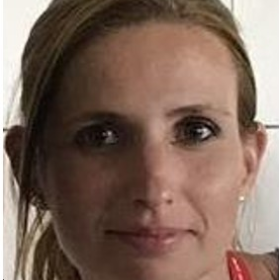Membrane Separation Technology for Wastewater Treatment: Current Practice and Future Directions
A special issue of Water (ISSN 2073-4441). This special issue belongs to the section "Wastewater Treatment and Reuse".
Deadline for manuscript submissions: closed (30 November 2023) | Viewed by 1272
Special Issue Editors
Interests: membrane technology; circular economy; waste valorization; wastewater treatment; membrane fouling and cleaning
Special Issues, Collections and Topics in MDPI journals
Interests: synthetic membranes; water and wastewater treatment; filtration
Special Issues, Collections and Topics in MDPI journals
Interests: membrane technology; water and wastewater treatment
Special Issue Information
Dear Colleagues,
This Special Issue is devoted to the exploration of current practice and future directions in membrane separation technology applied to wastewater treatment. The scarcity of water and the environmental concerns related to wastewater disposal make wastewater treatment a crucial issue. Membrane processes have a recognized and important role in this field, and they contribute to sustainable development. Topics in this Special Issue include, but are not limited to, membrane operations applied on an industrial scale as well as those under investigation at laboratory or pilot-plant scales for wastewater treatment. The application of membrane processes for the recovery of valuable compounds from wastewater streams, the removal of toxic products and zero liquid discharge approaches are also within the scope of the Issue. Novel membrane materials (both polymeric and inorganic) and applications (including hybrid processes) and mathematical modelling are considered as well. Original research works and reviews are welcome.
Prof. Dr. Silvia Álvarez Blanco
Dr. María Cinta Vincent-Vela
Dr. María José Luján-Facundo
Dr. Eva Ferrer-Polonio
Guest Editors
Manuscript Submission Information
Manuscripts should be submitted online at www.mdpi.com by registering and logging in to this website. Once you are registered, click here to go to the submission form. Manuscripts can be submitted until the deadline. All submissions that pass pre-check are peer-reviewed. Accepted papers will be published continuously in the journal (as soon as accepted) and will be listed together on the special issue website. Research articles, review articles as well as short communications are invited. For planned papers, a title and short abstract (about 100 words) can be sent to the Editorial Office for announcement on this website.
Submitted manuscripts should not have been published previously, nor be under consideration for publication elsewhere (except conference proceedings papers). All manuscripts are thoroughly refereed through a single-blind peer-review process. A guide for authors and other relevant information for submission of manuscripts is available on the Instructions for Authors page. Water is an international peer-reviewed open access semimonthly journal published by MDPI.
Please visit the Instructions for Authors page before submitting a manuscript. The Article Processing Charge (APC) for publication in this open access journal is 2600 CHF (Swiss Francs). Submitted papers should be well formatted and use good English. Authors may use MDPI's English editing service prior to publication or during author revisions.
Keywords
- membrane processes
- wastewater treatment
- valuable compounds
- toxic compounds
- zero discharge
- membrane materials








